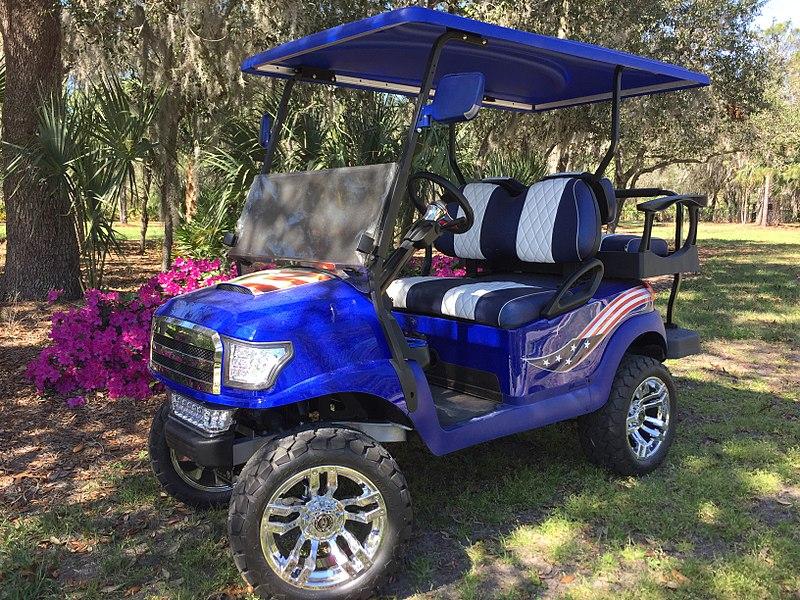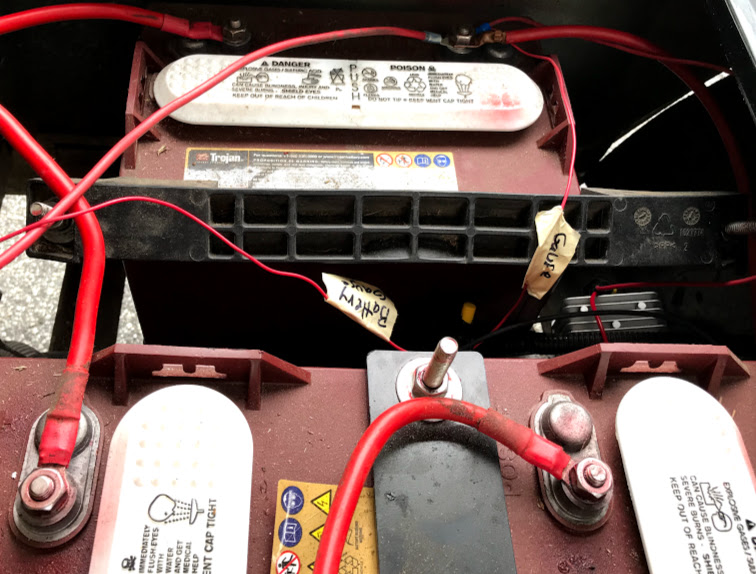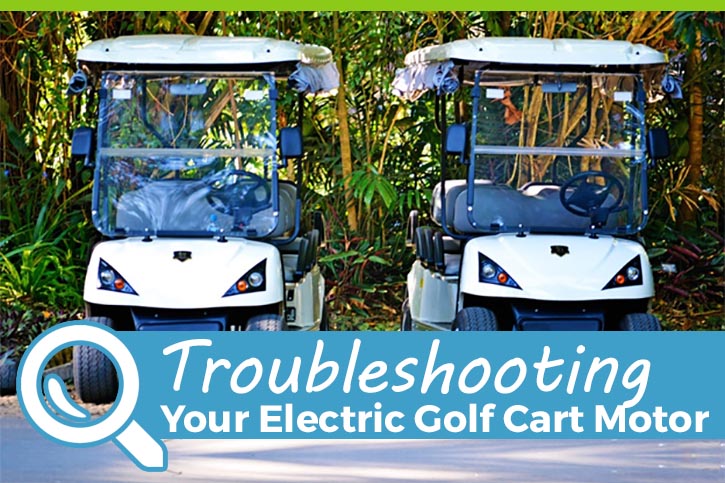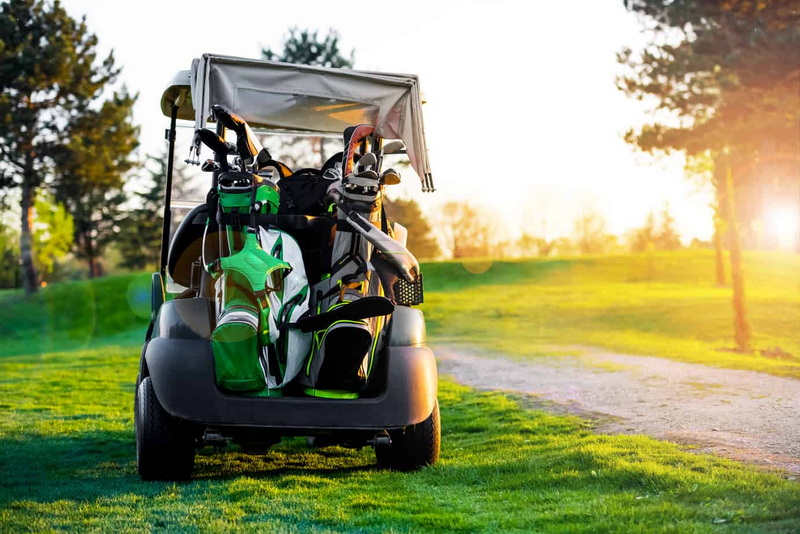Content Menu
● Understanding Your Electric Club Car Golf Cart
● Common Issues and Their Solutions
>> Battery Problems
>> Motor Issues
>> Controller Problems
>> Solenoid Issues
● Step-by-Step Troubleshooting Guide
● Preventative Maintenance
● When to Seek Professional Help
● Conclusion
● FAQ
>> 1. How often should I charge my electric golf cart?
>> 2. What's the average lifespan of golf cart batteries?
>> 3. Can I use car batteries in my golf cart?
>> 4. How can I increase the speed of my electric golf cart?
>> 5. Is it normal for my golf cart to make a clicking sound when I press the accelerator?
Electric Club Car golf carts are popular vehicles for both recreational and practical use. However, like any mechanical device, they can experience issues over time. This comprehensive guide will walk you through the process of troubleshooting and repairing your electric Club Car golf cart, ensuring you can get back on the green or road in no time.

Understanding Your Electric Club Car Golf Cart
Before diving into troubleshooting, it's essential to understand the basic components of your electric Club Car golf cart:
1. Batteries
2. Motor
3. Controller
4. Solenoid
5. Charger
6. Wiring
Each of these components plays a crucial role in the operation of your golf cart, and issues with any of them can lead to performance problems.
Common Issues and Their Solutions
Battery Problems
The most common issue with electric golf carts is battery-related. Here are some signs of battery problems:
- Reduced range
- Slow acceleration
- Difficulty climbing hills
- Failure to hold a charge
To troubleshoot battery issues:
1. Check the water levels in each cell (for lead-acid batteries)
2. Clean the battery terminals to remove corrosion
3. Ensure all connections are tight
4. Test the voltage of each battery
If your batteries are more than 3-5 years old, it may be time for a replacement.
Motor Issues
If your golf cart is not moving or is moving erratically, the problem might be with the motor. Common motor problems include:
- Worn brushes
- Damaged armature
- Faulty bearings
To troubleshoot motor issues:
1. Remove the motor
2. Inspect the brushes for wear
3. Check the armature for signs of damage or burning
4. Test the motor with a multimeter

Controller Problems
The controller regulates the power flow from the batteries to the motor. Signs of controller issues include:
- Intermittent power loss
- Sudden stops or starts
- Failure to accelerate
To troubleshoot controller problems:
1. Check all wiring connections
2. Inspect for signs of burning or melting
3. Test the controller output with a multimeter
Solenoid Issues
The solenoid acts as a switch between the batteries and the motor. Common solenoid problems include:
- Clicking sound but no movement
- No clicking sound when the accelerator is pressed
To troubleshoot solenoid issues:
1. Check the wiring connections
2. Test the solenoid with a multimeter
3. Replace if necessary
Step-by-Step Troubleshooting Guide
1. Check the Batteries: Always start with the batteries. Ensure they are fully charged and the connections are clean and tight[2].
2. Listen for the Solenoid: When you turn the key and press the accelerator, you should hear a clicking sound. If not, the problem may be with the solenoid or its connections[2].
3. Inspect the Wiring: Look for any loose, frayed, or damaged wires throughout the cart[3].
4. Test the Motor: If the batteries and solenoid are working, but the cart still won't move, the issue may be with the motor. Remove the motor and inspect it for wear or damage[7].
5. Check the Controller: If the cart moves erratically or loses power intermittently, the controller may be the culprit. Inspect it for signs of damage or overheating[2].
6. Examine the Charger: If your cart isn't holding a charge, the problem could be with the charger. Test it to ensure it's providing the correct voltage[9].
7. Inspect the Brakes: If your cart moves but doesn't stop properly, check the brake system. Look for worn brake pads or damaged cables[9].

Preventative Maintenance
Regular maintenance can prevent many common issues. Here are some tips:
1. Keep batteries clean and topped up with distilled water (for lead-acid batteries)
2. Regularly clean and tighten all electrical connections
3. Grease moving parts as recommended by the manufacturer
4. Inspect tires for wear and maintain proper inflation
5. Store your golf cart in a dry, covered area when not in use
When to Seek Professional Help
While many issues can be resolved with basic troubleshooting, some problems require professional attention. Consider seeking help if:
- You're uncomfortable working with electrical systems
- The problem persists after basic troubleshooting
- You notice signs of major damage or wear
- The issue involves complex components like the controller
Remember, safety should always be your top priority when working on your golf cart.
Conclusion
Troubleshooting and repairing your electric Club Car golf cart can seem daunting at first, but with a systematic approach and some basic knowledge, many issues can be resolved at home. Regular maintenance and prompt attention to small problems can prevent larger, more expensive issues down the line. By following this guide, you'll be better equipped to keep your golf cart running smoothly for years to come.

FAQ
1. How often should I charge my electric golf cart?
It's best to charge your golf cart after each use, regardless of how long you've used it. This helps maintain battery life and ensures your cart is always ready for use.
2. What's the average lifespan of golf cart batteries?
With proper maintenance, golf cart batteries typically last 4-6 years. However, this can vary depending on usage patterns and maintenance practices.
3. Can I use car batteries in my golf cart?
While it's possible, it's not recommended. Golf cart batteries are designed for deep discharge cycles, while car batteries are not. Using car batteries can lead to reduced performance and shorter battery life.
4. How can I increase the speed of my electric golf cart?
Speed can be increased by upgrading the motor, controller, or changing the gear ratio. However, these modifications should only be done by professionals to ensure safety and compliance with local regulations.
5. Is it normal for my golf cart to make a clicking sound when I press the accelerator?
Yes, a single clicking sound when you press the accelerator is normal. This is the sound of the solenoid engaging. However, repeated clicking or no sound at all could indicate a problem.











































